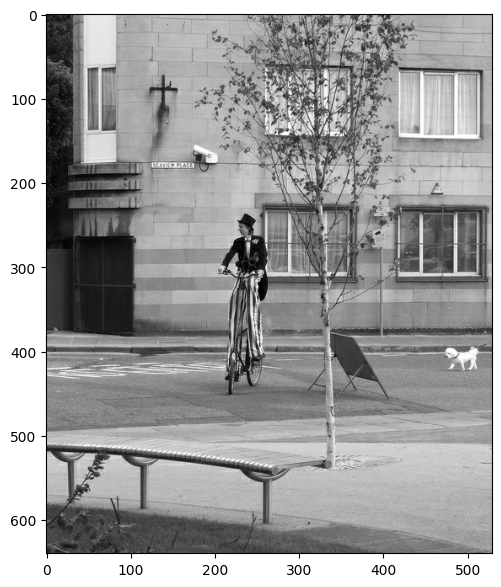创建 TFRecords
作者: Dimitre Oliveira
创建日期 2021/02/27
最后修改日期 2023/12/20
描述: 将数据转换为 TFRecord 格式。
简介
TFRecord 格式是一种存储二进制记录序列的简单格式。将数据转换为 TFRecord 格式有许多优点,例如:
- 更高效的存储:TFRecord 数据比原始数据占用的空间更少;它还可以被分割成多个文件。
- 快速 I/O:TFRecord 格式可以通过并行 I/O 操作读取,这对于 TPU 或多台主机很有用。
- 自包含文件:TFRecord 数据可以从单个源读取——例如,COCO2017 数据集最初将数据存储在两个文件夹(“images”和“annotations”)中。
TFRecord 数据格式的一个重要用例是在 TPU 上进行训练。首先,TPU 的速度足够快,可以从优化的 I/O 操作中获益。此外,TPU 要求数据存储在远程位置(例如 Google Cloud Storage),使用 TFRecord 格式可以更轻松地加载数据,而无需分批下载。
如果您还将 TFRecord 格式与 tf.data API 一起使用,其性能可以得到进一步提升。
在此示例中,您将学习如何将不同类型的数据(图像、文本和数字)转换为 TFRecord。
参考
依赖项
import os
os.environ["KERAS_BACKEND"] = "tensorflow"
import keras
import json
import pprint
import tensorflow as tf
import matplotlib.pyplot as plt
下载 COCO2017 数据集
我们将使用 COCO2017 数据集,因为它具有多种不同类型的特征,包括图像、浮点数据和列表。它将很好地说明如何将不同特征编码到 TFRecord 格式。
该数据集包含两组字段:图像和注释元数据。
图像是一系列 JPG 文件,元数据存储在一个 JSON 文件中。根据 官方网站,该文件包含以下属性:
id: int,
image_id: int,
category_id: int,
segmentation: RLE or [polygon], object segmentation mask
bbox: [x,y,width,height], object bounding box coordinates
area: float, area of the bounding box
iscrowd: 0 or 1, is single object or a collection
root_dir = "datasets"
tfrecords_dir = "tfrecords"
images_dir = os.path.join(root_dir, "val2017")
annotations_dir = os.path.join(root_dir, "annotations")
annotation_file = os.path.join(annotations_dir, "instances_val2017.json")
images_url = "http://images.cocodataset.org/zips/val2017.zip"
annotations_url = (
"http://images.cocodataset.org/annotations/annotations_trainval2017.zip"
)
# Download image files
if not os.path.exists(images_dir):
image_zip = keras.utils.get_file(
"images.zip",
cache_dir=os.path.abspath("."),
origin=images_url,
extract=True,
)
os.remove(image_zip)
# Download caption annotation files
if not os.path.exists(annotations_dir):
annotation_zip = keras.utils.get_file(
"captions.zip",
cache_dir=os.path.abspath("."),
origin=annotations_url,
extract=True,
)
os.remove(annotation_zip)
print("The COCO dataset has been downloaded and extracted successfully.")
with open(annotation_file, "r") as f:
annotations = json.load(f)["annotations"]
print(f"Number of images: {len(annotations)}")
Downloading data from http://images.cocodataset.org/zips/val2017.zip
815585330/815585330 ━━━━━━━━━━━━━━━━━━━━ 79s 0us/step
Downloading data from http://images.cocodataset.org/annotations/annotations_trainval2017.zip
252907541/252907541 ━━━━━━━━━━━━━━━━━━━━ 5s 0us/step
The COCO dataset has been downloaded and extracted successfully.
Number of images: 36781
COCO2017 数据集内容
pprint.pprint(annotations[60])
{'area': 367.89710000000014,
'bbox': [265.67, 222.31, 26.48, 14.71],
'category_id': 72,
'id': 34096,
'image_id': 525083,
'iscrowd': 0,
'segmentation': [[267.51,
222.31,
292.15,
222.31,
291.05,
237.02,
265.67,
237.02]]}
参数
num_samples 是每个 TFRecord 文件中的数据样本数。
num_tfrecords 是我们将创建的 TFRecord 总数。
num_samples = 4096
num_tfrecords = len(annotations) // num_samples
if len(annotations) % num_samples:
num_tfrecords += 1 # add one record if there are any remaining samples
if not os.path.exists(tfrecords_dir):
os.makedirs(tfrecords_dir) # creating TFRecords output folder
定义 TFRecords 辅助函数
def image_feature(value):
"""Returns a bytes_list from a string / byte."""
return tf.train.Feature(
bytes_list=tf.train.BytesList(value=[tf.io.encode_jpeg(value).numpy()])
)
def bytes_feature(value):
"""Returns a bytes_list from a string / byte."""
return tf.train.Feature(bytes_list=tf.train.BytesList(value=[value.encode()]))
def float_feature(value):
"""Returns a float_list from a float / double."""
return tf.train.Feature(float_list=tf.train.FloatList(value=[value]))
def int64_feature(value):
"""Returns an int64_list from a bool / enum / int / uint."""
return tf.train.Feature(int64_list=tf.train.Int64List(value=[value]))
def float_feature_list(value):
"""Returns a list of float_list from a float / double."""
return tf.train.Feature(float_list=tf.train.FloatList(value=value))
def create_example(image, path, example):
feature = {
"image": image_feature(image),
"path": bytes_feature(path),
"area": float_feature(example["area"]),
"bbox": float_feature_list(example["bbox"]),
"category_id": int64_feature(example["category_id"]),
"id": int64_feature(example["id"]),
"image_id": int64_feature(example["image_id"]),
}
return tf.train.Example(features=tf.train.Features(feature=feature))
def parse_tfrecord_fn(example):
feature_description = {
"image": tf.io.FixedLenFeature([], tf.string),
"path": tf.io.FixedLenFeature([], tf.string),
"area": tf.io.FixedLenFeature([], tf.float32),
"bbox": tf.io.VarLenFeature(tf.float32),
"category_id": tf.io.FixedLenFeature([], tf.int64),
"id": tf.io.FixedLenFeature([], tf.int64),
"image_id": tf.io.FixedLenFeature([], tf.int64),
}
example = tf.io.parse_single_example(example, feature_description)
example["image"] = tf.io.decode_jpeg(example["image"], channels=3)
example["bbox"] = tf.sparse.to_dense(example["bbox"])
return example
生成 TFRecord 格式的数据
让我们生成 TFRecord 格式的 COCO2017 数据。格式为 file_{number}.tfrec(这是可选的,但在文件名中包含数字序列可以使计数更容易)。
for tfrec_num in range(num_tfrecords):
samples = annotations[(tfrec_num * num_samples) : ((tfrec_num + 1) * num_samples)]
with tf.io.TFRecordWriter(
tfrecords_dir + "/file_%.2i-%i.tfrec" % (tfrec_num, len(samples))
) as writer:
for sample in samples:
image_path = f"{images_dir}/{sample['image_id']:012d}.jpg"
image = tf.io.decode_jpeg(tf.io.read_file(image_path))
example = create_example(image, image_path, sample)
writer.write(example.SerializeToString())
探索生成的 TFRecord 中的一个样本
raw_dataset = tf.data.TFRecordDataset(f"{tfrecords_dir}/file_00-{num_samples}.tfrec")
parsed_dataset = raw_dataset.map(parse_tfrecord_fn)
for features in parsed_dataset.take(1):
for key in features.keys():
if key != "image":
print(f"{key}: {features[key]}")
print(f"Image shape: {features['image'].shape}")
plt.figure(figsize=(7, 7))
plt.imshow(features["image"].numpy())
plt.show()
bbox: [473.07 395.93 38.65 28.67]
area: 702.1057739257812
category_id: 18
id: 1768
image_id: 289343
path: b'datasets/val2017/000000289343.jpg'
Image shape: (640, 529, 3)

使用生成的 TFRecords 训练一个简单的模型
TFRecord 的另一个优点是您可以向其中添加许多特征,并且以后只使用其中的几个。在这种情况下,我们将只使用 image 和 category_id。
定义数据集辅助函数
def prepare_sample(features):
image = keras.ops.image.resize(features["image"], size=(224, 224))
return image, features["category_id"]
def get_dataset(filenames, batch_size):
dataset = (
tf.data.TFRecordDataset(filenames, num_parallel_reads=AUTOTUNE)
.map(parse_tfrecord_fn, num_parallel_calls=AUTOTUNE)
.map(prepare_sample, num_parallel_calls=AUTOTUNE)
.shuffle(batch_size * 10)
.batch(batch_size)
.prefetch(AUTOTUNE)
)
return dataset
train_filenames = tf.io.gfile.glob(f"{tfrecords_dir}/*.tfrec")
batch_size = 32
epochs = 1
steps_per_epoch = 50
AUTOTUNE = tf.data.AUTOTUNE
input_tensor = keras.layers.Input(shape=(224, 224, 3), name="image")
model = keras.applications.EfficientNetB0(
input_tensor=input_tensor, weights=None, classes=91
)
model.compile(
optimizer=keras.optimizers.Adam(),
loss=keras.losses.SparseCategoricalCrossentropy(),
metrics=[keras.metrics.SparseCategoricalAccuracy()],
)
model.fit(
x=get_dataset(train_filenames, batch_size),
epochs=epochs,
steps_per_epoch=steps_per_epoch,
verbose=1,
)
50/50 ━━━━━━━━━━━━━━━━━━━━ 146s 2s/step - loss: 3.9206 - sparse_categorical_accuracy: 0.1690
<keras.src.callbacks.history.History at 0x7f70684c27a0>
结论
此示例表明,通过 TFRecord,您可以从单个源读取数据,而不是从不同源读取图像和注释。此过程可以使数据存储和读取更简单、更高效。有关更多信息,您可以查阅 TFRecord 和 tf.train.Example 教程。